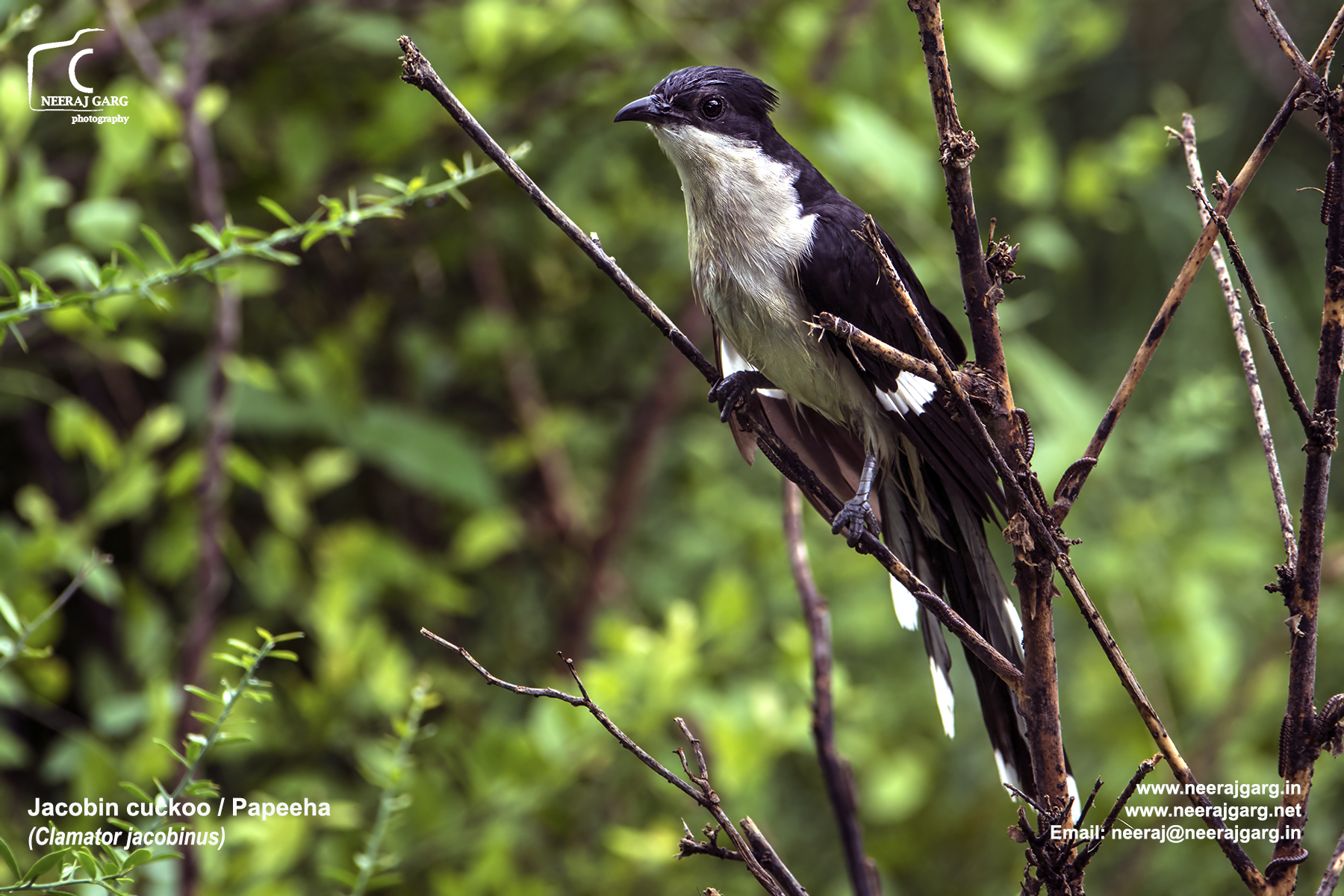
Jacobin Cuckoo has been associated with a bird in Indian Mythology and poetry, known as the ‘Chatak’ represented as a bird with a beak on its head that waits for rains to quench its thirst. The advent of the monsoon has for generations been associated with the appearance of the Pied Cuckoo in many parts of India.
The onset of the monsoon is one of the most anticipated events on the Indian calendar. Apart from being critical for agriculture and drinking water, the monsoon rains provide a welcome relief from the dry hot summer and bring waves of life to parched landscapes across the country. Many of us anxiously await news of the monsoon; and some of us eagerly track the bird that brings the monsoon with it.
In July, 2014 while visiting Keoladev Ghana Bird Sanctuary during monsoon season, we spotted this Jacobin Cuckoo (Clamator jacobinus), also known as Pied Cuckoo or Crested Pied Cuckoo. It was perched on branch under a short shrub and all of us kneeled down to take a picture of it. While me, Nischal Goel, Vishal Verma and Alok Kumar were clicking this beauty, Ajit Singh was busy catching our action in camera using his brand new L series 70-200 mm f/2.8 IS-II Lens.
Jacobin Cuckoo has been associated with a bird in Indian Mythology and poetry, known as the ‘Chatak’ represented as a bird with a beak on its head that waits for rains to quench its thirst. The advent of the monsoon has for generations been associated with the appearance of the Pied Cuckoo in many parts of India. The strong association between the Pied Cuckoo and rain is part of Indian folklore, in which this species is described as a harbinger of the monsoon. Ancient Hindu poetry refers to Pied Cuckoos as 'chatak',who live on drops of rain. In some parts of the country its also known as ‘Papeeha’ which is an integral part of folklore and poetry in north India.
This medium sized, slim black and white cuckoo with a crest is distinctive. The white wing patch on the black wing and the pattern make it unmistakable even in flight. They are very vocal during the breeding season. The call is a ringing series of whistling notes "piu-piu" with the calls of the nominate form more rapid and slightly mellower.
COPYRIGHT © 2023 NEERAJ GARG